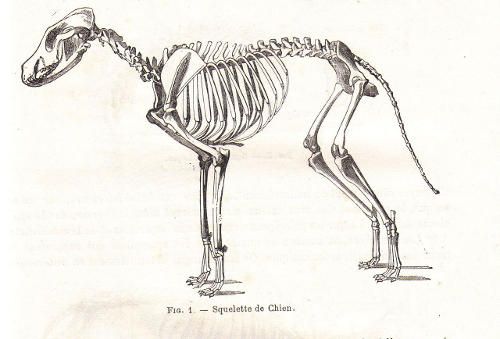
What You Need to Know About Bone Cancer In Dogs
Cancer is a scary diagnosis, whether you’re talking about people or dogs. Bone cancer, or the form of Hemangiosarcoma that affects the skeletal system, is one of the scariest.
Bone cancer in dogs and in people can be hard to spot and is usually extremely fast progressing. It is malignant and, left untreated, will be fatal.
What Is Hemangiosarcoma Bone Cancer in Dogs?
Hemangiosarcoma bone cancer in dogs is, as the name suggests, a form of cancer that affects the bones – but it doesn’t originate there.
In fact, Hemangiosarcoma originates in the endothelial cells of the blood vessels. From there, it gets into blood vessels and, from there, into the bones themselves.
Symptoms of Bone Cancer in Dogs
Bone cancer is so often fatal because it can be hard to spot. In fact, the first time a dog owner may realize that their dog is affected is when they have a sudden, unexplained bone fracture.
Here are some of the other signs to be on the lookout for:
- Fractures
- Swelling if the affected bones are fairly close to the surface
- Lameness of legs if they are affected
- If the ribs are affected, dogs may experience trouble breathing too
- Anemia if the tumor has ruptured, leading to blood loss
- As a result of this anemia, you may also notice pale mucous membranes (in fact, pale gums are nearly always a warning sign that something is not right with your dog!)
Bone cancer usually affects older dogs, but as with humans, it can be diagnosed at any age, so never ignore these warning signs!
How Bone Cancer in Dogs Is Diagnosed
If your veterinarian suspects that your dog may have bone cancer, they will order a series of tests to confirm the diagnosis and determine the severity of the problem.
Tests usually include blood and urine testing, and your veterinarian will also want to have X-rays done to determine where the cancer is, how affected the bones are, and whether any other organs are affected.
Treatment of Bone Cancer in Dogs
Surgery is nearly always the first choice for treating bone cancer in dogs, and it’s almost always aggressive.
If the tumor or affected bones are in a limb, the limb will almost certainly be amputated completely.
If it’s not in a limb, then your veterinary surgeon will attempt to remove as much of the tumor and affected tissue as possible.
Surgery is often followed up with chemotherapy to kill any remaining cancerous cells.
After surgery and treatment, your veterinarian will set up a frequent checkup schedule, during which additional testing will be carried out so that any returning cancer can be caught and treated quickly. They will also monitor reactions to cancer drugs and adjust dosages or treatment programs accordingly.
What You Can Do to Help Your Dog Who Has Bone Cancer
Cancer makes people feel helpless, whether it’s a human or canine loved one that is affected, but there are a few things you can do to help your dog heal and be more comfortable.
Administer all medications exactly as directed. Your veterinarian may also give you pain medications for your dog, which can help ease post-surgical and other pain.
Limit physical activity during the recovery period, and keep your dog away from younger, bouncier pets and children if possible.
Pay attention to your dog’s food and water intake. Remember that, like humans, dogs that are recovering from or in treatment for cancer may not want to eat or drink. Tempt them with healthy treats, or consider feeding tubes or liquid diets for a while.
What Is the Prognosis for Dogs with Bone Cancer
The toughest thing about bone cancer caused by Hemangiosarcoma is that even when treated, the prognosis is usually not good. Most dogs will only survive another six months, and only 10% will live longer than a year.
Discuss your dog’s chances with your veterinarian, and make your decisions based on their assessment. While it is always tempting to have just a little longer with your dog, if they are going to be in pain or made sick by treatment for only a few months, it may be kinder not to prolong their suffering.
{loadpostion Related}
